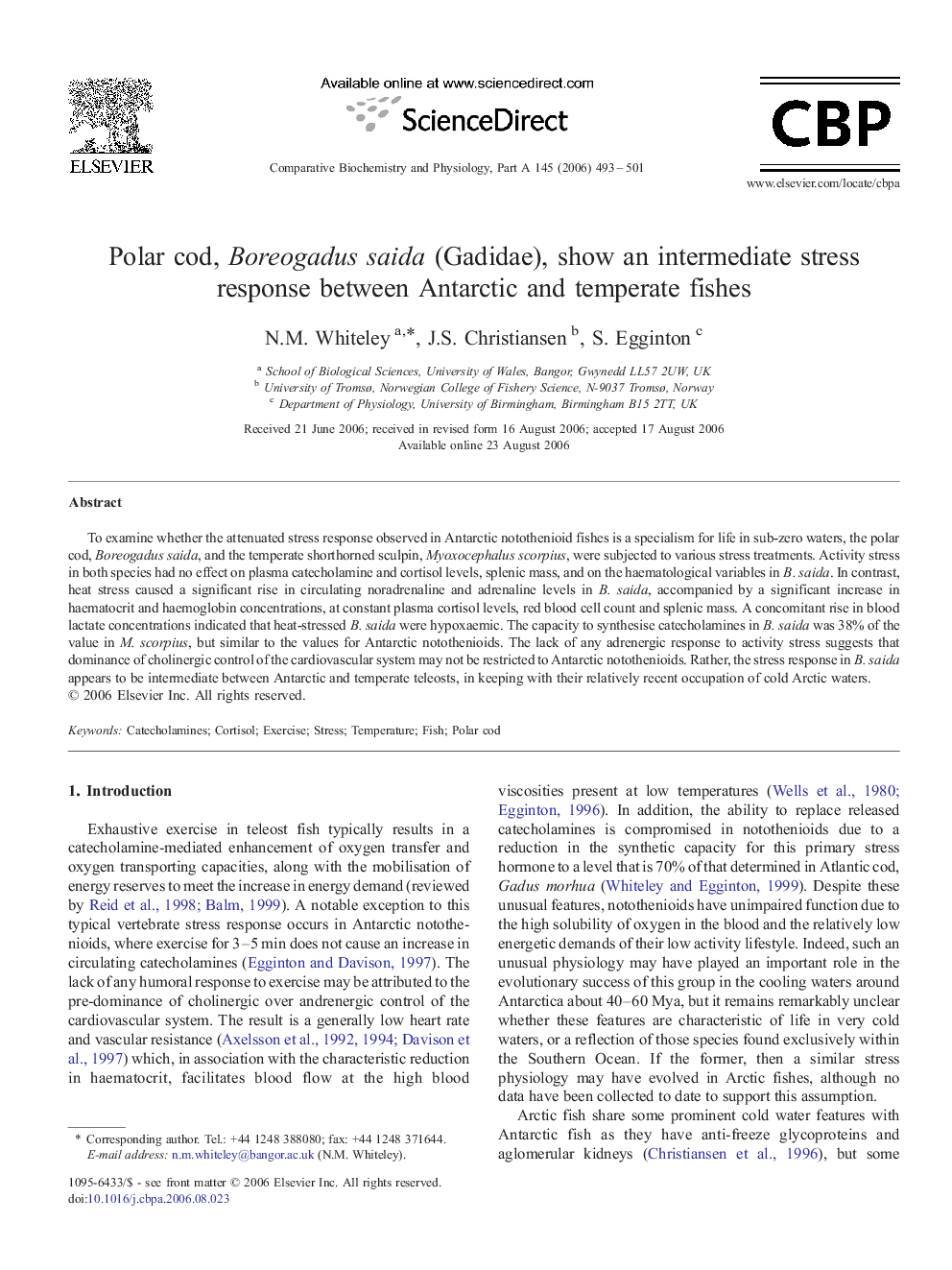| Article ID | Journal | Published Year | Pages | File Type |
|---|---|---|---|---|
| 1974612 | Comparative Biochemistry and Physiology Part A: Molecular & Integrative Physiology | 2006 | 9 Pages |
To examine whether the attenuated stress response observed in Antarctic notothenioid fishes is a specialism for life in sub-zero waters, the polar cod, Boreogadus saida, and the temperate shorthorned sculpin, Myoxocephalus scorpius, were subjected to various stress treatments. Activity stress in both species had no effect on plasma catecholamine and cortisol levels, splenic mass, and on the haematological variables in B. saida. In contrast, heat stress caused a significant rise in circulating noradrenaline and adrenaline levels in B. saida, accompanied by a significant increase in haematocrit and haemoglobin concentrations, at constant plasma cortisol levels, red blood cell count and splenic mass. A concomitant rise in blood lactate concentrations indicated that heat-stressed B. saida were hypoxaemic. The capacity to synthesise catecholamines in B. saida was 38% of the value in M. scorpius, but similar to the values for Antarctic notothenioids. The lack of any adrenergic response to activity stress suggests that dominance of cholinergic control of the cardiovascular system may not be restricted to Antarctic notothenioids. Rather, the stress response in B. saida appears to be intermediate between Antarctic and temperate teleosts, in keeping with their relatively recent occupation of cold Arctic waters.
